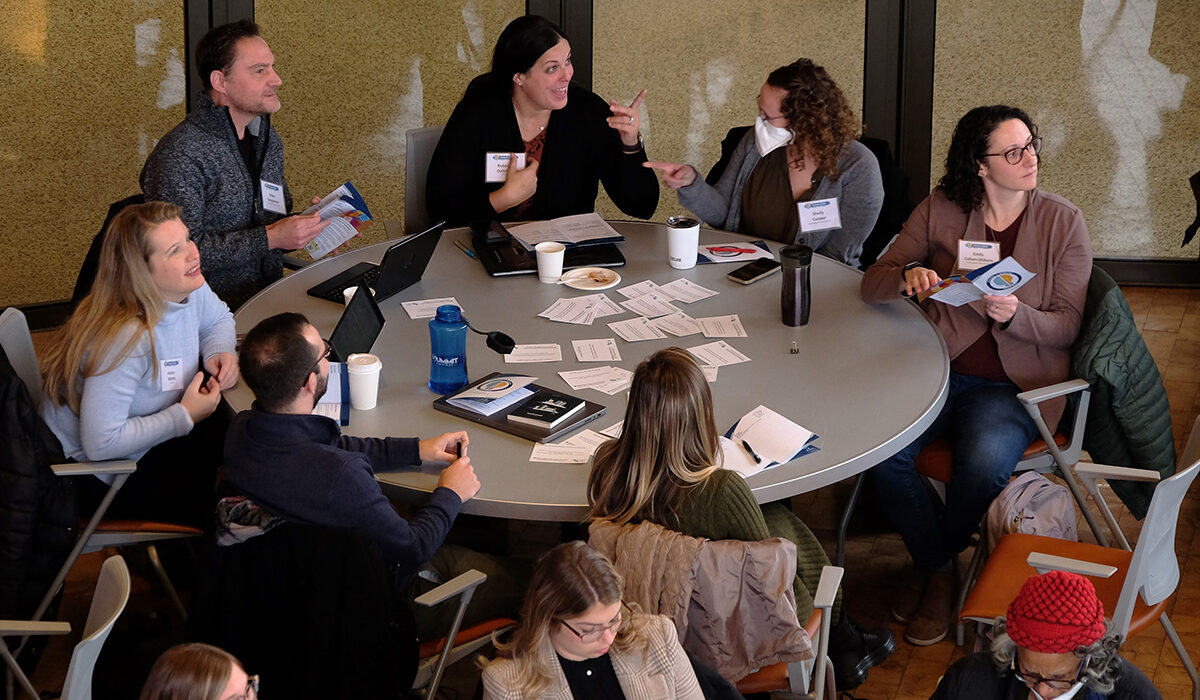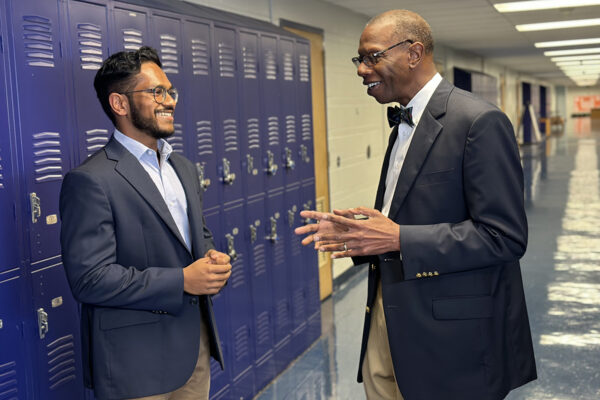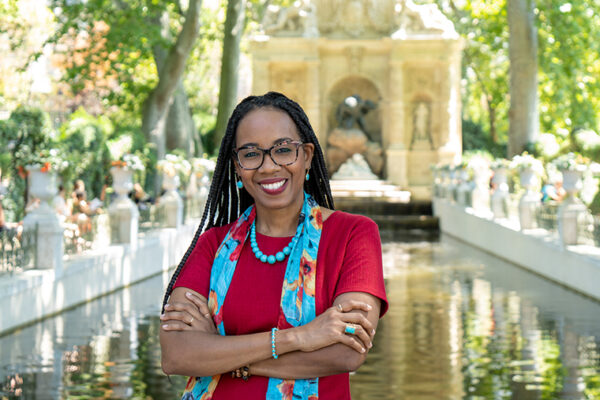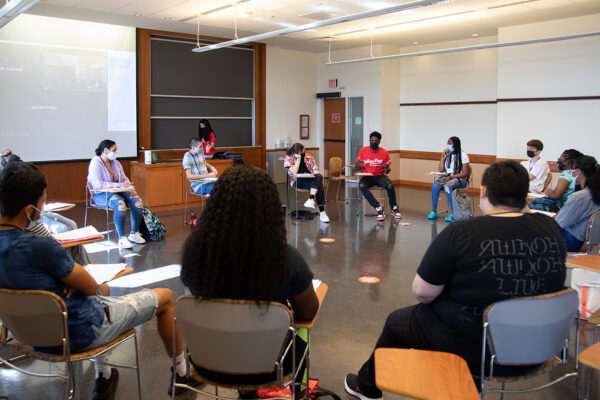Technology — a pedagogical ally or enemy? The answer, of course, is: It depends.
At the recent iTeach Conference, hosted Jan. 10 by the Center for Teaching and Learning, Washington University in St. Louis educators shared how they use technology to boost learning — and when they keep it out of the classroom.
“When we last held iTeach in 2018, Zoom, ChatGPT and HyFlex teaching were unknown, and that shows just how much the teaching landscape has changed,” said Eric Fournier, director of educational development at the Center for Teaching and Learning. “iTeach is an opportunity for WashU faculty and staff to gather together, share their innovative practices, learn from each other and celebrate their shared dedication to quality teaching.”
Here are four examples of ways WashU educators are, and are not, using technology in the classroom.
Proving ChatGPT wrong
Undergraduates in Frank Lovett’s global justice seminar are not only allowed to ask ChatGPT exam questions; they are required to. The hard work comes next when they must evaluate what ChatGPT got right, what it got wrong and what it simply omitted.
“I basically said, ‘I want you to ask ChatGPT about the concepts we discussed in class, save your transcript and then write your critique,” said Lovett, a professor of political science and director of legal studies, both in Arts & Sciences.
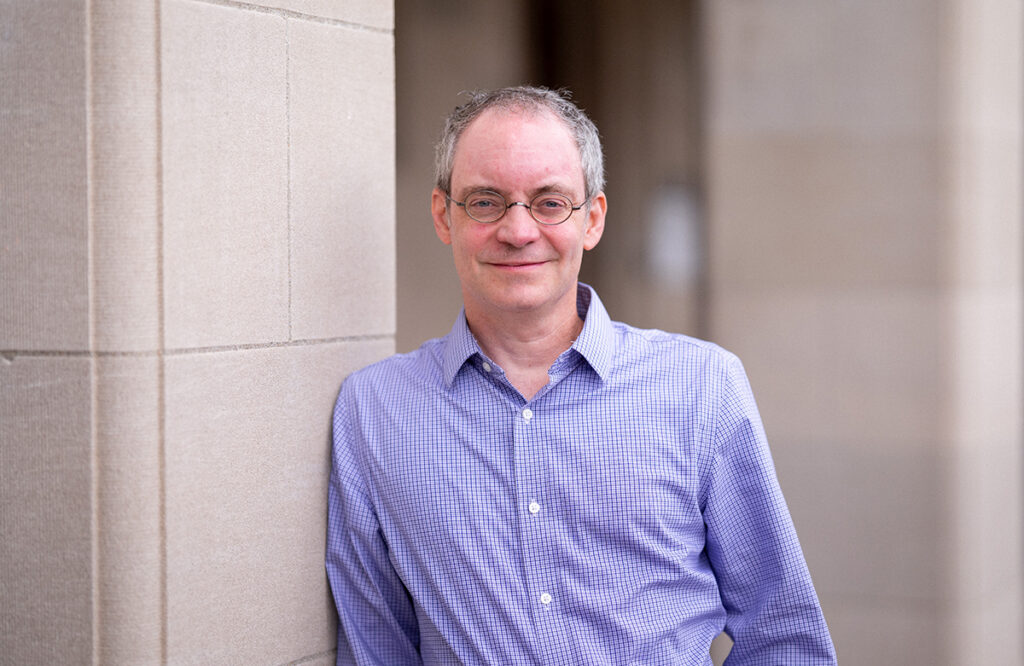
The first time students used ChatGPT, the results were predictably poor. For instance, when asked to explain the concept of the assurance dilemma and to name relevant scholars, ChatGPT offered a vague analysis that failed to discuss the moral implications of the concept; nor did it include the right authors.
“Often the students were hoodwinked by Chat because the answers Chat gives are always very articulate and seem plausible, but we know that Chat gets things wrong or omits relevant information. Chat also says things that aren’t wrong by virtue of being sufficiently vague.”
In the following class, Lovett and the class picked apart Chat’s answers, studying its obvious and subtle mistakes. Lovett repeated the same exam format for the final. This time, students wrestled deeply with ChatGPT’s responses, providing thoughtful, detailed answers.
“That’s really a low-tech solution to getting the most pedagogical value out of Chat,” Lovett said. “The students realized that Chat is not like a calculator. When you use a calculator, you know it’s right even if you don’t know why it’s right. If you can’t tell if the answer Chat gives you is right, then you don’t know the material.”
First three, screen free
Coming back from the pandemic, Elisabeth Windle, a lecturer in English in Arts & Sciences, was excited to be back in the classroom but disturbed by the degree to which her students had become attached to their computers.
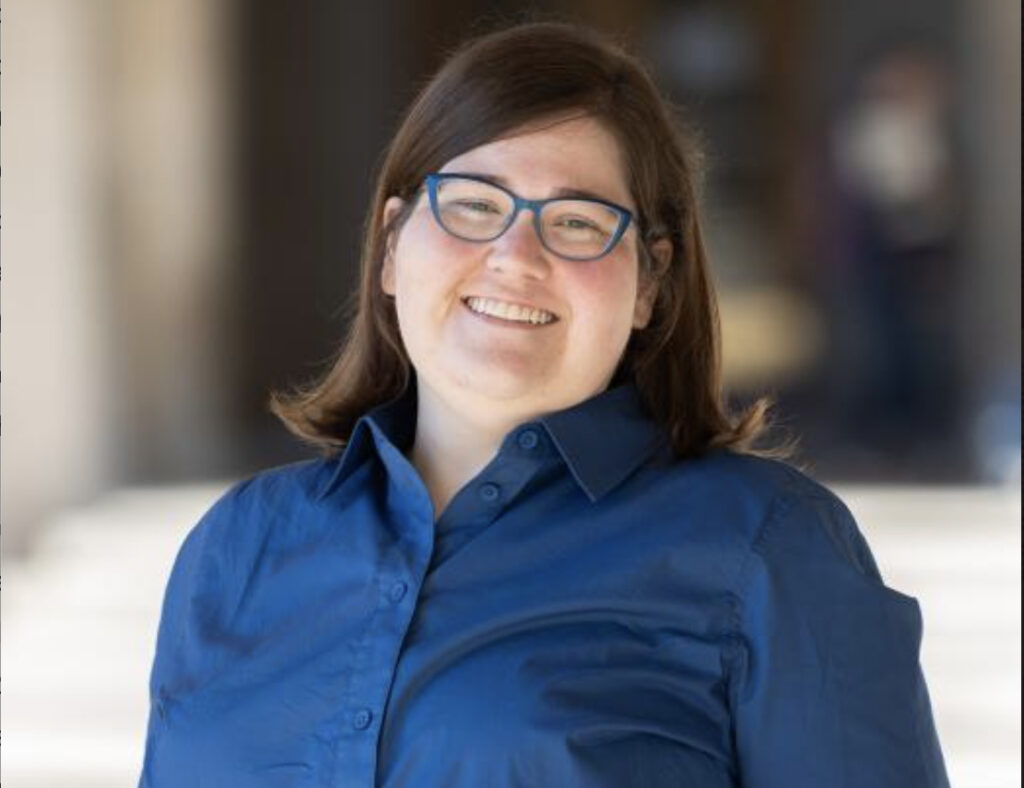
“I would look out into the classroom and see a wall of screens,” Windle recalled. “That’s disheartening for an instructor and honestly for the classmates as well.”
Windle knows not all students share her affection for turning the pages of a book and putting pen to paper. So she came up with a compromise — screens are banned for the first three weeks of semester. That means no tablets, no phones, no laptops. But once the three weeks pass, the students may use devices as they see fit.
“I explain why this is really important. For one, it builds a classroom community. I also believe it helps students become better readers,” Windle said. “Because of the pandemic, some students don’t know the full benefit of an analog education. My introduction to literary theory class, for instance, really requires that sort of close, careful attention to text that I think you can accomplish best on paper.”
Windle acknowledges not all classes would benefit from this policy. For instance, Windle’s composition students need their devices to write and research. And, of course, some students require accommodations.
Still, Windle says the policy is an overall success.
“For me, the real happy ending is that students are starting think about which particular styles of learning work best for them,” Windle said.
Augmented reality field trips
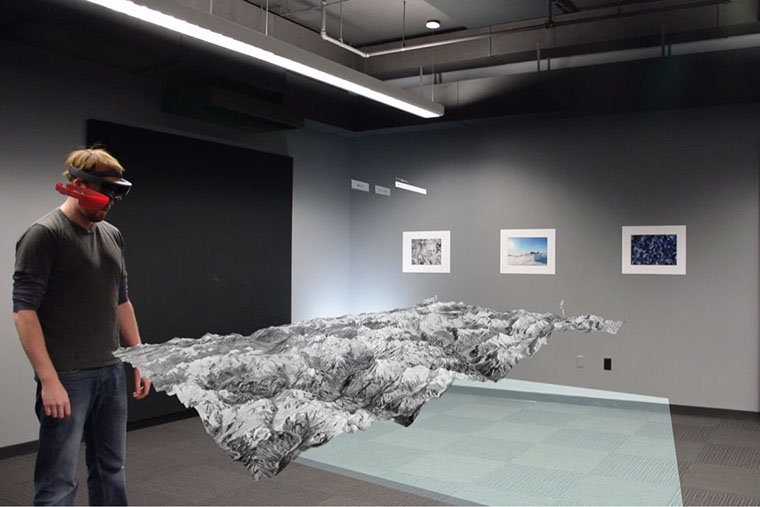
Phil Skemer can’t fly his structural geology students to Wales to study the famed Stackpole syncline. And a field trip to Mars is definitely out of the question.
So Skemer, a professor of earth, environmental and planetary sciences in Arts & Sciences and director of the Fossett Laboratory for Virtual Planetary Exploration, uses a range of augmented devices and technologies to bring faraway lands to his St. Louis classroom.
“A 2D picture simply cannot capture the complexity of structural geology,” Skemer said. “By using augmented reality technology, I can create a truly collaborative and interactive experience. I can have them walk around and manipulate the object as if it was actually present in the room. Everyone is looking at the same thing in the same space and at the same time. It’s like being in the field.”
Augmented reality is nothing new. The technology was first developed in the 1960s and became widely popular with the launch of Pokémon Go in 2016. A more recent phenomenon, though, is the broad availability of high-quality 3D models. Skemer designed the GeoExplorer app, which offers thousands of 3D terrain models.
A growing number of commercial platforms like Sketchfab and cultural institutions like the Smithsonian also have digitized 3D models ranging from the COVID spike protein to Chinese ceramics to Tyrannosaurus rex skeletons. The Fossett Lab also helps WashU faculty create their own 3D models through a process called photogrammetry.
“With easy-to-use programs like Metashape, you just take your camera, take a bunch of photos from different angles, dump them into a folder and the program will spit out a rather amazing 3D object,” Skemer said.
‘Fighting’ AI with oral exams
In response to ChatGPT, instructor Shelly Cooper substituted lengthy take-home exams with shorter oral exams to better assess her doctoral students’ theoretical knowledge of statistics.
“I did this to so-call fight AI, but the reality is that I don’t want to fight AI at all,” said Cooper, a lecturer in Psychological & Brain Sciences in Arts & Sciences. “I’m a big fan of AI; I think it’s really beneficial for our students in the classroom and beyond. But our job is to figure out when it’s a help and when it’s a hindrance.”
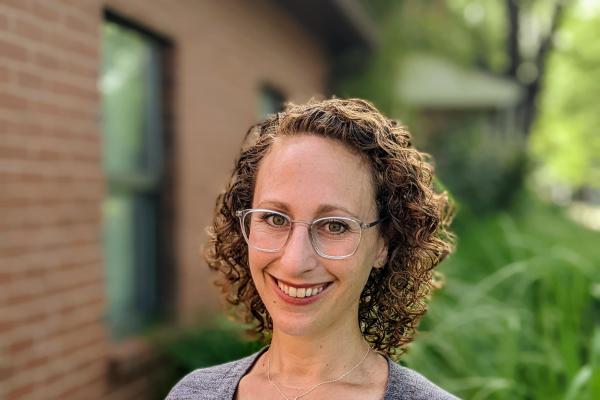
Like many instructors, Cooper transitioned to take-home exams during the pandemic. She gave students four hours to complete and explain a set of math problems.
“And they needed every minute,” Cooper said. “Most of that time was spent explaining how they came to their answer.”
The arrival of ChatGPT forced Cooper to reevaluate her assessments. Would her students be tempted to lean on the new technology during a four-hour exam?
“If using ChatGPT would be beneficial for students, I would be all for it. But here’s the thing — when they pitch to their boss or present to an audience, they can’t be ChatGPT-ing,” Cooper said.
Cooper now offers 15-minute oral exams and provides immediate feedback. Students also take an in-class test, which focuses on math equations. Students give the new format high marks, reporting that the oral exam format increased their learning and their confidence in presenting their work. The process also saved Cooper substantial time grading.
